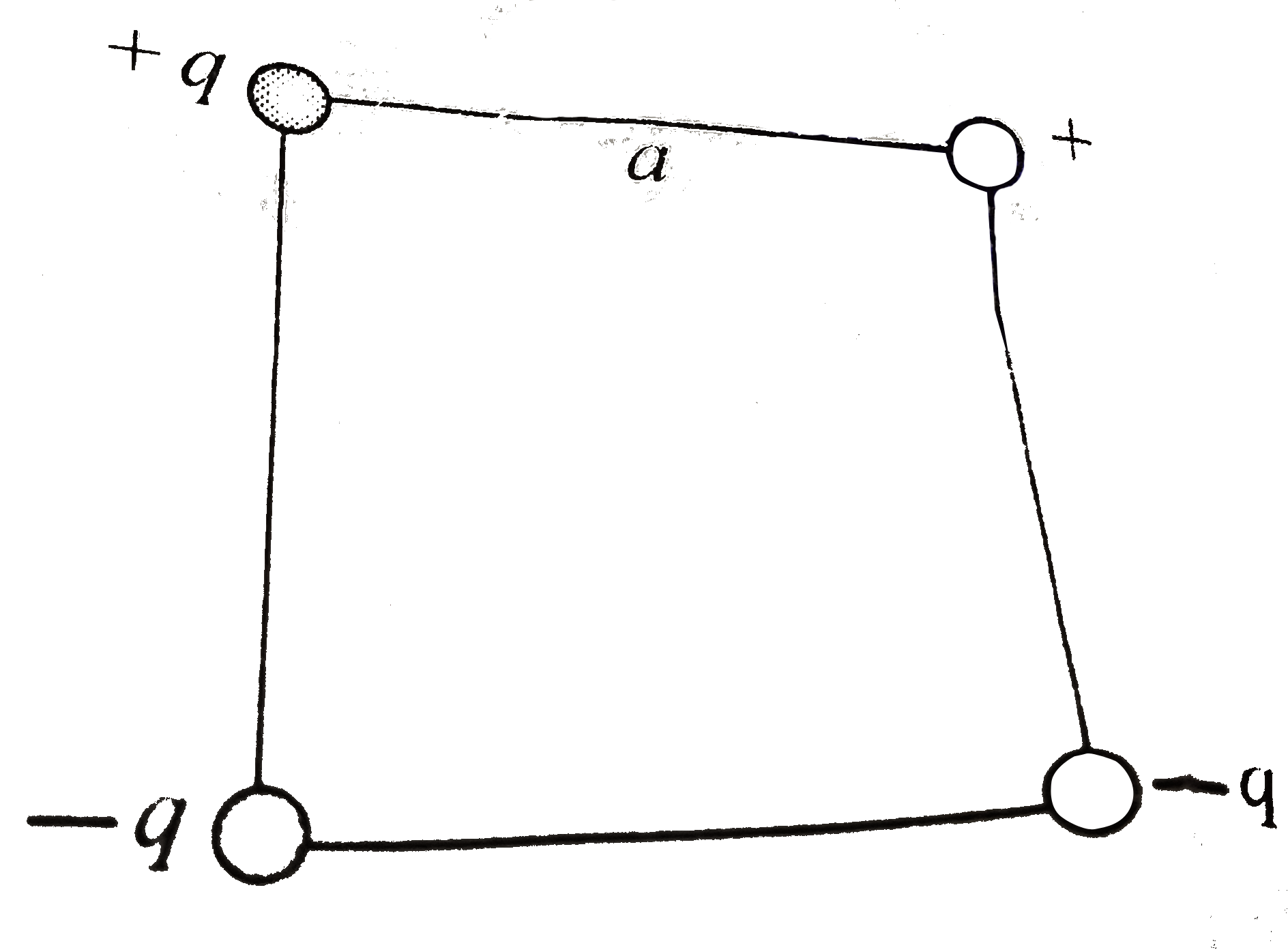Four charges are placed at four corners of a square as shown in figure. The side of the square is a. Two charges are positive and two are negative, but their magnitudes are the same. Now, an external agent starts decreasing all the sides of the square slowly and at the same rate. What happens to the electrical potential energy of the system and what will be the nature of work done by the agent?

increases, positive
increases, negative
decreases, negative
decreases, positive
The correct Answer is:C
Electrical potential energy of system
U=−2[kq2√2a]=−√2kq2a (four pairs will cancel each other)
If a decreases U also decreases and if U decreases, the agent will do negative work
Topper's Solved these Questions
- BOOK - CENGAGE PHYSICS ENGLISHCHAPTER - MISCELLANEOUS VOLUME 3EXERCISE - Assertion and Reason Type8videos
MISCELLANEOUS VOLUME 3
- BOOK - CENGAGE PHYSICS ENGLISHCHAPTER - MISCELLANEOUS VOLUME 3EXERCISE - Comprehension Type94videos
MISCELLANEOUS VOLUME 3
- BOOK - CENGAGE PHYSICS ENGLISHCHAPTER - MAGNETIC FIELD AND MAGNETIC FORCESEXERCISE - Multiple Correct Answer type2videos
MAGNETIC FIELD AND MAGNETIC FORCES
- BOOK - CENGAGE PHYSICS ENGLISHCHAPTER - MISCELLANEOUS VOLUME 5EXERCISE - Integer12videos
MISCELLANEOUS VOLUME 5
Similar Questions
Four charges are arranged at the corners of a square ABCD as shown in the figure. The force on the charge kept at the centre O will be:
 View Solution
View SolutionFour charges are arranged at the corners of a square as shown in the figure. The direction of electric field at the centre of the square is along
 View Solution
View Solution
Knowledge Check
- Question 1 - Select One
Four charges are arranged at the corners of a square ABCD, as shown in the adjoining figure. The force on the charge kept at the centre O is
 Aalong the diagonal BDBalong the diagonal ACCzeroDperpendicular to side AB
Aalong the diagonal BDBalong the diagonal ACCzeroDperpendicular to side AB
Equal charges Q are placed at the four corners A, B, C, D of a square of length a. The magnitude of the force on the charge at B will be
View SolutionFour point charges are placed at the corners of a square ABCD of side 10 cm, as shown in figure. The force on a charge of 1μC placed at the centre of square is
 View Solution
View SolutionA point charge Q is placed at the corner of a square of side a. Find the flux through the square.
View SolutionFour identical point charges q are placed at four corners of a square of side a. Find the potential energy of the charge system.
 .View Solution
.View SolutionFour point charges are placed at the corners of a square of side l. Calculate potential at the centre of square.
 View Solution
View SolutionFour point are placed at four comerse of a squared of side 4 m as shown. Match the following table.
 View Solution
View SolutionFour charge are placed at the corners of a square of side 10 cm as shown in figure having. If q is 1μC, then what will be electric field intensity at the centre of the square?
 View Solution
View Solution
